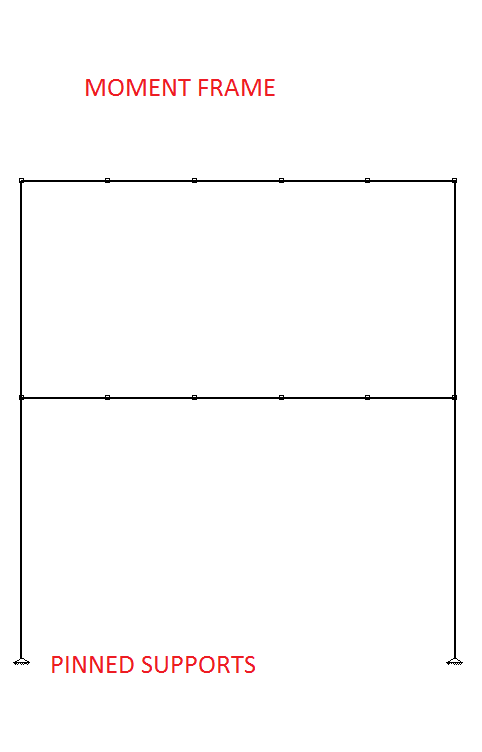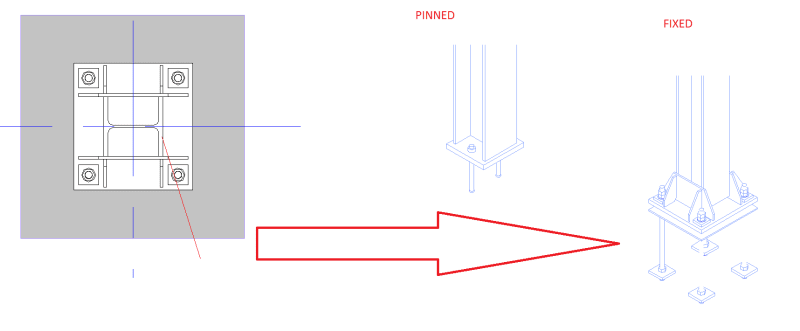Greetings, I have a question about pinned/fixed supports.
Let's say we have two moment frames and I modeled column's supports as pinned. Because of that I have designed a footing to axial forces only.
Now contractor made them fixed (based on detail bellow). As I know this means that footings will also see moments from the end of the column since supports are fixed which means footings should be larger.
Since footings are not sufficient for fixed connection, how will this act in real life? Will footings rotate and the system will act as pinned supports?



Let's say we have two moment frames and I modeled column's supports as pinned. Because of that I have designed a footing to axial forces only.
Now contractor made them fixed (based on detail bellow). As I know this means that footings will also see moments from the end of the column since supports are fixed which means footings should be larger.
Since footings are not sufficient for fixed connection, how will this act in real life? Will footings rotate and the system will act as pinned supports?



